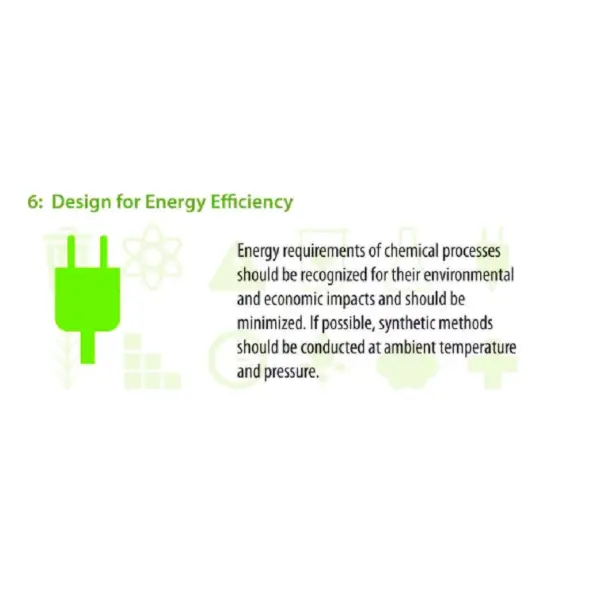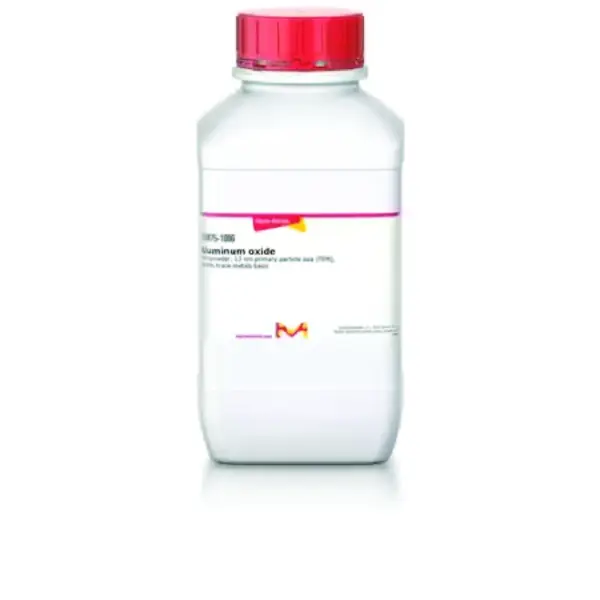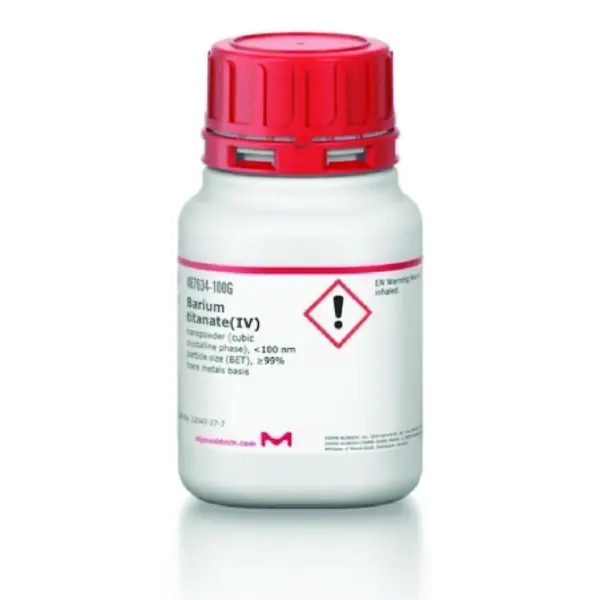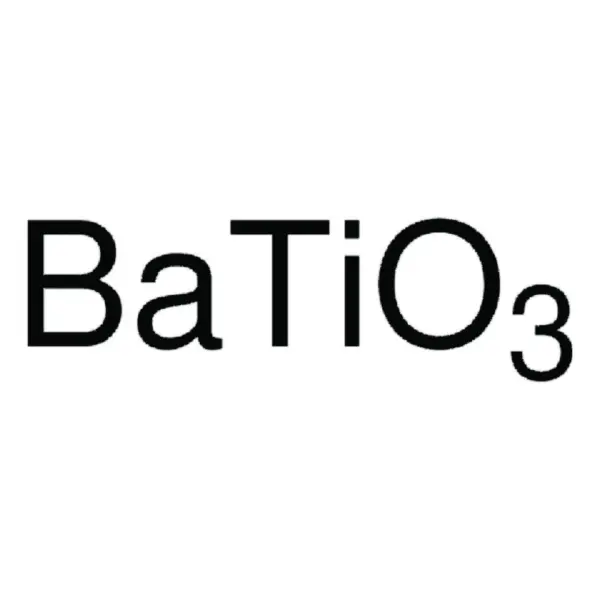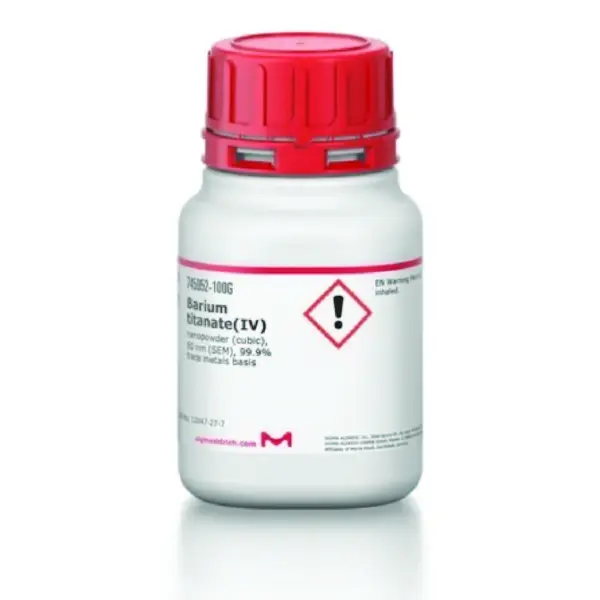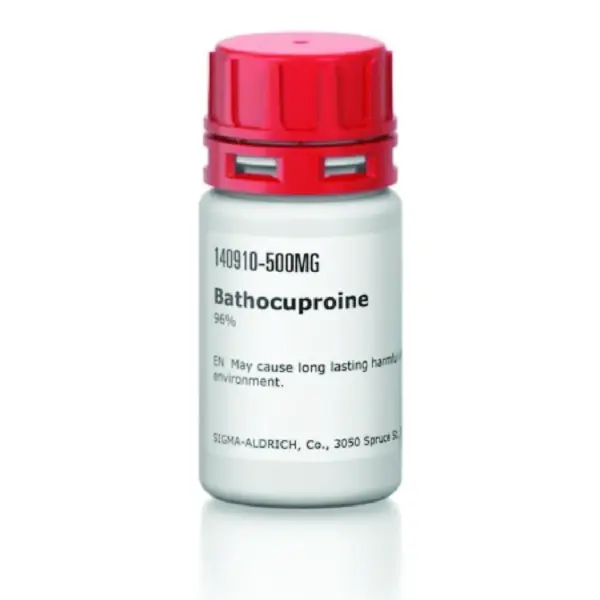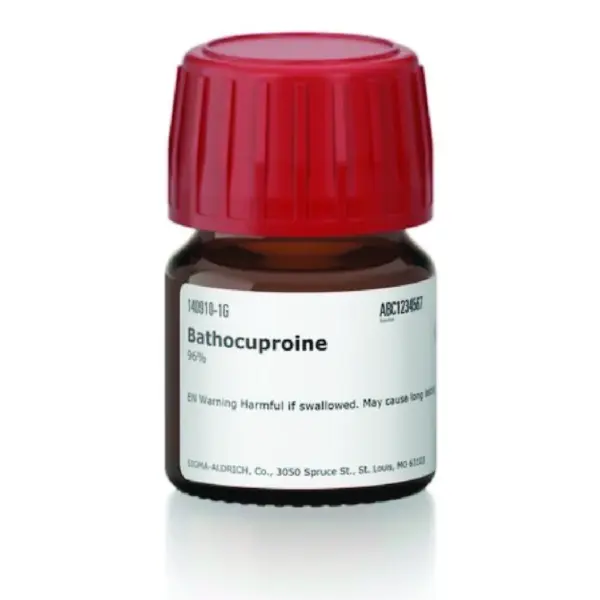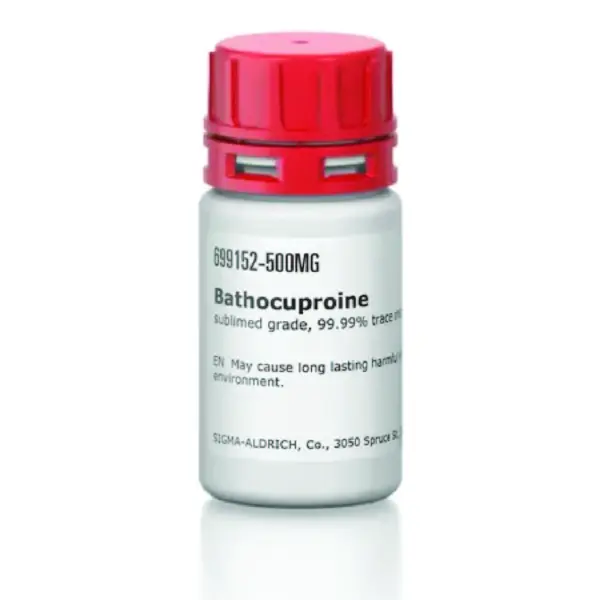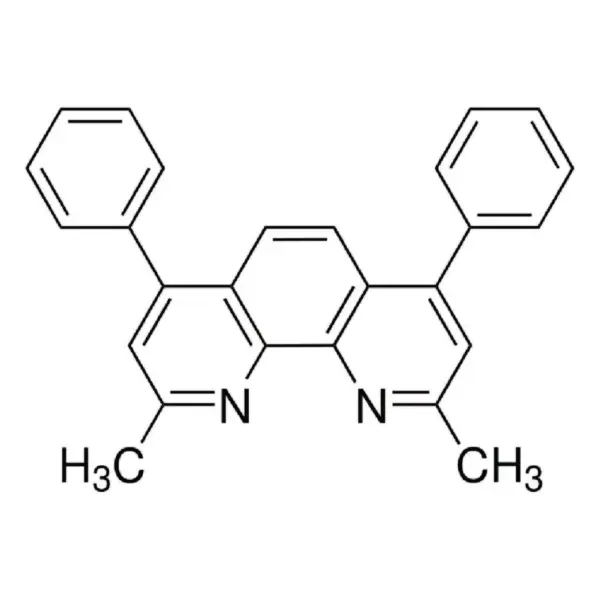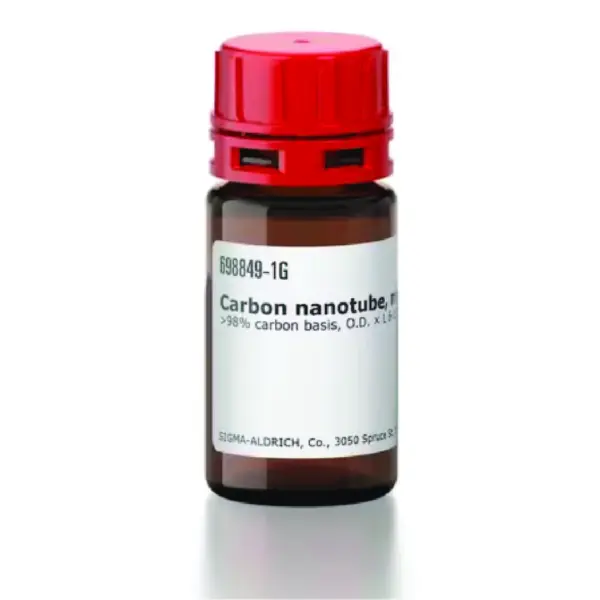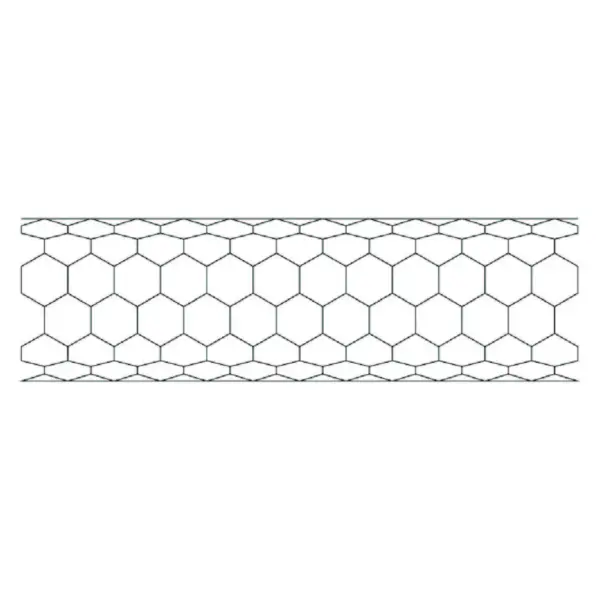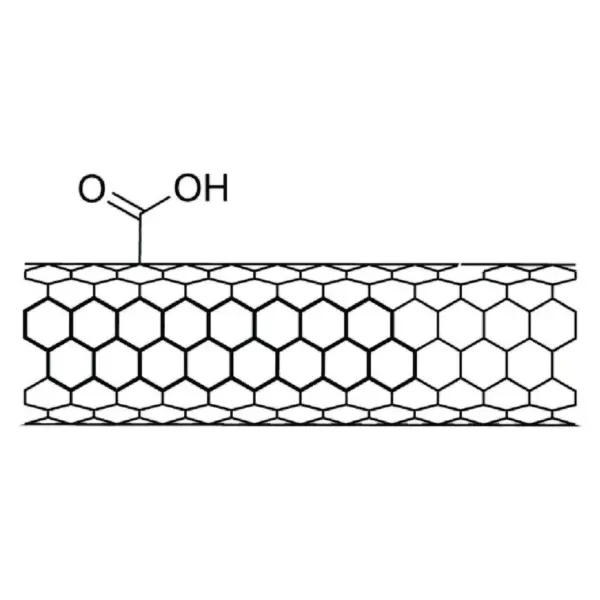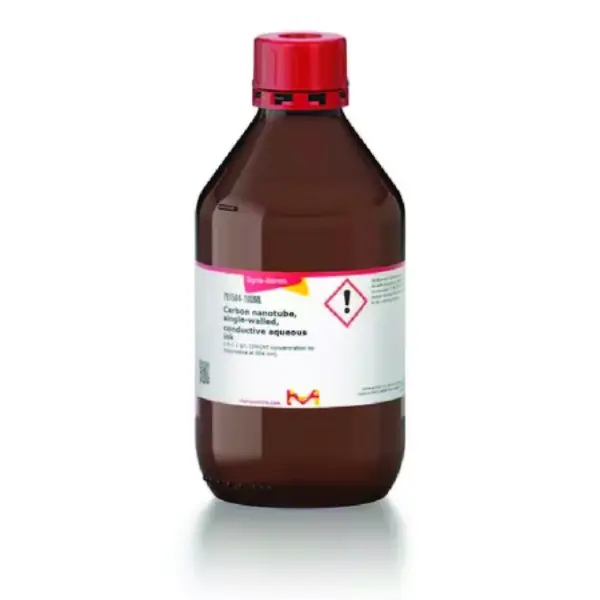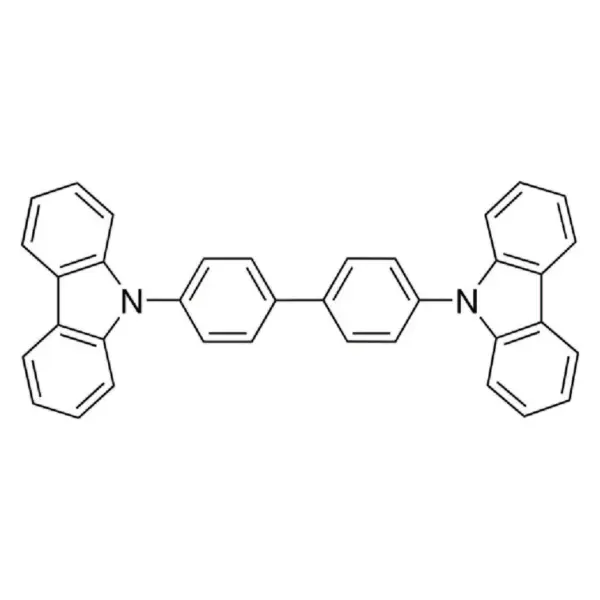
4,4′-Bis(N-carbazolyl)-1,1′-biphenyl – Sigma-Aldrich
RM1,730.00Brand:
Sigma-Aldrich
Synonyms
4,4′-Bis(9-carbazolyl)-1,1′-biphenyl, 4,4-N,N′-Dicarbazole-1,1′-biphenyl, CBP, DCBP
Cas No.
58328-31-7
General description
TGA/DSC lot-specific traces available upon request
We are committed to bringing you Greener Alternative Products, which adhere to one or more of The 12 Principles of Greener Chemistry. This product belongs to the Enabling category of greener alternatives, aligning with the “Design for energy efficiency” principle. Hole transport organic materials allow perfect energy level alignment with the absorber layer and therefore efficient charge collection, but are prone to degradation in ambient conditions. Click here for more information.

4,4′-Bis(N-carbazolyl)-1,1′-biphenyl, 97% – Sigma-Aldrich
RM571.00Brand:
Sigma-Aldrich
Synonyms
4,4′-Bis(9-carbazolyl)-1,1′-biphenyl, 4,4-N,N′-Dicarbazole-1,1′-biphenyl, CBP, DCBP
Cas No.
58328-31-7
General description
We are committed to bringing you Greener Alternative Products, which adhere to one or more of The 12 Principles of Greener Chemistry. This product belongs to the Enabling category of greener alternatives, aligning with the “Design for energy efficiency” principle. Hole transport organic materials allow perfect energy level alignment with the absorber layer and therefore efficient charge collection, but are prone to degradation in ambient conditions. Click here for more information.
Application
Organic Semiconductor Laser Materials
4,4′-Bis(N-carbazolyl)-1,1′-biphenyl is a hole-transport material in high-efficiency red OLEDs and electroluminescent dendritic complexes.
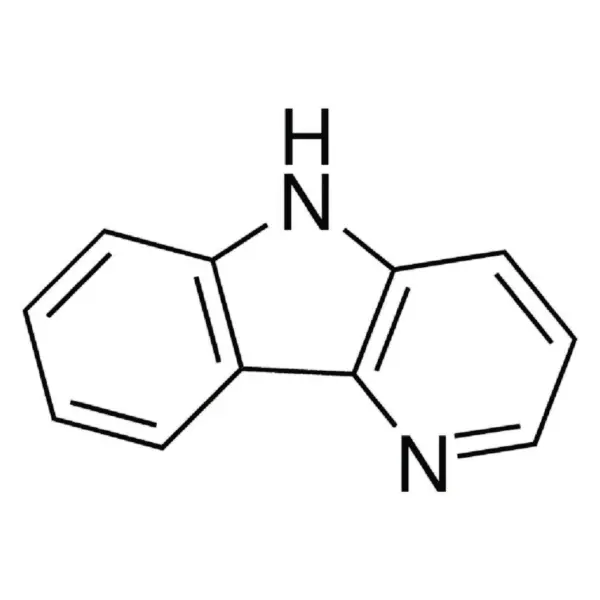
5H-Pyrido[3,2-b]indole – Sigma-Aldrich
RM1,374.00Brand:
Sigma-Aldrich
Synonyms
δ-Carboline
Cas No.
245-08-9
Application
Novel aromatic amine compound for organic electroluminescent device, illuminating device and display.[1]
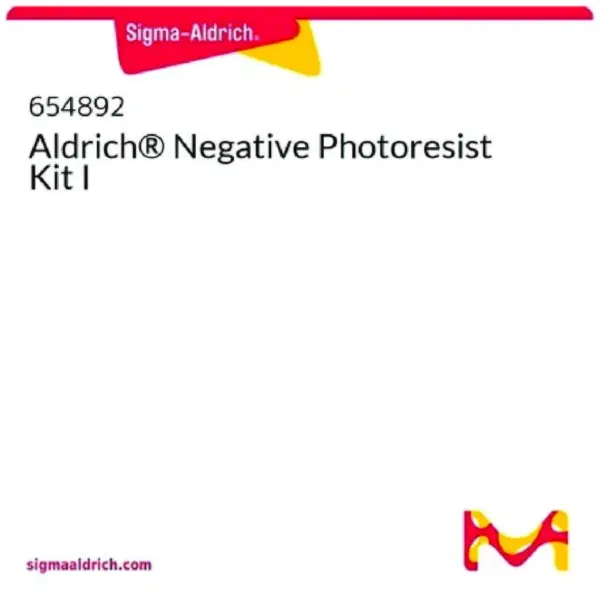
Aldrich® Negative Photoresist Kit I – Sigma-Aldrich
RM1,127.00Brand:
Sigma-Aldrich
Synonyms
–
Cas No.
–
General description
Aldrich® Negative Photoresist Kit I consists of materials for photolithography. The photoresist can be spin coated on the glass substrate for the formation of electrode arrays. The kit also provides masking and patterning on the glass surface.
Application
Aldrich® Negative Photoresist Kit I has been used in the fabrication of microelectrodes by photolithography.[2] It can also be used to fabricate the droplet-based microfluidic device, microfluidic chips, glass optical waveguides, and integrated grating couplers.[3][4]
Legal Information
Aldrich is a registered trademark of Sigma-Aldrich Co. LLC
Aluminum oxide, alpha phase, nanopowder, 135 nm avg. part. size, 99.9% trace metals basis – Sigma-Aldrich
RM846.00Brand:
Sigma-Aldrich
Synonyms
α-Al2O3, Alpha-alumina, Corundum, Dialuminium trioxide, Alumina
Cas No.
1344-28-1
General description
Aluminum oxide, alpha phase, nanopowder is a high-purity, ultrafine powder with an average particle size of 135 nm. Alpha-phase alumina nanopowder has superior mechanical and thermal stability, high hardness, and wear resistance. Its high dielectric strength and low dielectric loss make it a suitable material for insulators and capacitors in electronic components. Additionally, its biocompatibility, bioactivity, and wear resistance make it an attractive material for biomedical applications. This product has a purity of 99.9%, making it an ideal choice for a range of industrial applications. Our aluminum oxide nanopowder is carefully manufactured to ensure consistent quality and particle size distribution, resulting in superior performance and reliability.
We are committed to bringing you Greener Alternative Products, which belongs to one of the four categories of greener alternatives. This product has been enhanced for energy efficency. Click here for more information.
Application
Alpha-phase alumina nanopowder with a purity of 99.9% finds its major applications in the production of advanced ceramics, nanocomposites, and as a catalyst support material. The high surface area and excellent dispersibility of alpha-phase alumina nanoparticles make them ideal as a reinforcing agent in nanocomposites, where they improve the mechanical, thermal, and electrical properties of the composite material. In advanced ceramics, the fine particle size of alpha-phase alumina nanopowder makes it a suitable material for use where a high degree of homogeneity is required. Alpha-phase alumina nanopowder is also used as a support material for catalysts due to its high surface area and excellent thermal stability. It is particularly attractive for catalytic applications due to its low acidity and high chemical inertness.
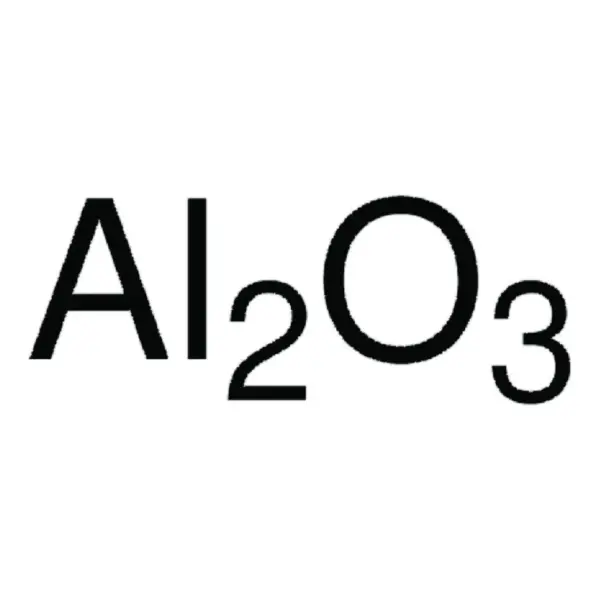
Aluminum oxide, gamma phase, nanopowder, 5 nm avg. part. size, 99.95% trace metals basis- Sigma-Aldrich
RM1,709.00Brand:
Sigma-Aldrich
Synonyms
γ-Al2O3, Cubic aluminium oxide, Gamma-alumina, Gamma-aluminum(III) oxide, Alumina
Cas No.
1344-28-1
General description
Gamma-phase Al2O3 is one of the several crystalline phases of aluminum oxide, also known as alumina. It has a cubic crystal structure with a high degree of symmetry, characterized by a closely packed arrangement of oxygen and aluminum ions, and tends to be highly porous. Our aluminum oxide nanopowder in the gamma phase is a high-purity product with 99.95% purity and an average particle size of 5 nm. This nanopowder is characterized by its high surface area, excellent dielectric properties, and resistance to corrosion and wear. Our aluminum oxide nanopowder is produced using advanced manufacturing techniques, ensuring uniform particle size and high purity.
We are committed to bringing you Greener Alternative Products, which belongs to one of the four categories of greener alternatives. This product has been enhanced for energy efficency. Click here for more information.
Application
Our gamma phase alumina nanopowder is useful in a variety of applications. Its high purity and small particle size make it an excellent catalyst and catalyst-support for chemical reactions, including dehydration, isomerization, hydrogenation, oxidation, reforming, and Fischer-Tropsch synthesis. Because of its porosity, it has many uses in pharmaceutical and industrial manufacturing processes as an adsorbent and desiccating agent. In addition, gamma-phase Al2O3 is a widely used material in the field of electronics due to its high dielectric constant, low dielectric loss, and excellent electrical insulation properties. Its ability to store electrical charge, retain its properties over a wide range of frequencies, and withstand high voltages make it an ideal choice for use in a wide range of electronic components, including capacitors, insulators, transformers, and high-frequency and high-voltage applications. The nanopowder′s hardness and stability make it suitable for use in wear-resistant coatings, and its resistance to corrosion and oxidation makes it a reliable material for high-temperature environments.

Aluminum oxide, nanopowder, <50 nm particle size (TEM)- Sigma-Aldrich
RM642.00Brand:
Sigma-Aldrich
Synonyms
Gamma Al2O3, Alumina
Cas No.
1344-28-1
General description
Aluminum oxide (Al2O3) based nanopowder is a metal oxide based nanosized material that can be used in a variety of industrial applications. It can be prepared by the hydrolysis of the alkoxide of Al2O3 and calcination of particles in the presence of stabilizing agents.
We are committed to bringing you Greener Alternative Products, which belong to one of the four categories of greener alternatives. Aluminum oxide serves as a multifunctional additive or coating in lithium-ion batteries, helping stabilize electrode–electrolyte interfaces, suppress side reactions, improve thermal stability, and extend cycle life. By enabling safer, longer-lasting cells, it reduces material waste and energy use across the battery lifecycle. Click here for more information.
Application
Al2O3 nanopowder can be used for a wide range of applications, such as ceramics,[3] aerospace,[4] wastewater treatment,[5] abrasives,[6] paints, catalysts, and flooring materials.
Aluminum oxide, nanopowder, 13 nm primary particle size (TEM), 99.8% trace metals basis – Sigma-Aldrich
RM1,298.00Brand:
Sigma-Aldrich
Synonyms
Aluminia, Alumina
Cas No.
1344-28-1
General description
Aluminum oxide nanoparticles (AlNPs) are porous nanomaterials with corundum-like structures. They possess high surface area, mechanical strength, and good optical properties. In addition, they have excellent chemical stability in harsh conditions such as abrasive environments and high temperatures. The ease of surface modification and bioinertess make them suitable for biomedical applications. These nanomaterials can be prepared by a cost-effective and simple protocol.
We are committed to bringing you Greener Alternative Products, which belong to one of the four categories of greener alternatives. Aluminum oxide serves as a multifunctional additive or coating in lithium-ion batteries, helping stabilize electrode–electrolyte interfaces, suppress side reactions, improve thermal stability, and extend cycle life. By enabling safer, longer-lasting cells, it reduces material waste and energy use across the battery lifecycle. Click here for more information.
Application
Aluminum nanoparticles can be used to prepare:
- Water-based nanofluids, which are used in engine cooling, heat exchangers, and nuclear cooling system. In graphene oxide/alumina nanofluid, the addition of aluminum nanoparticles improves the physical structure of graphene oxide and reduces the viscosity of the composite.
- Polysiloxane-aluminum oxide composites, applicable as an elastomeric thermal pad for light-emitting diodes.
It can also be used as an additive to improve the mechanical properties of polyvinyl chloride. The Al2O3 nanoparticles act as a solid inert phase in the polymer matrix and restrict the mobility of chains. As a result glass transition temperature increases and elastic modulus decreases.
Features and Benefits
- Stable in a harsh non-biological environment.
- They can be easily prepared through established synthesis methods.
- A vast surface area allows conjugation with chemical and biological molecules.
- Their surface modification protocols are straightforward.
- They can easily interact with biological interfaces.
Barium titanate(IV), nanopowder (cubic crystalline phase), <100 nm particle size (BET), ≥99% trace metals basis - Sigma-Aldrich
RM1,979.00Brand:
Sigma-Aldrich
Synonyms
Barium titanium oxide, Titanium barium oxide
Cas No.
12047-27-7
General description
Barium titanate(IV) is a ceramic material that can be synthesized by reacting titanium oxide (TiO2) and barium salts in the presence of oleic acid as a stabilizing agent. It has a cubic crystal structure which allows it to have ferroelectric, thermoelectric and piezoelectric properties. It forms a film with intense photoluminescence which can be used for a wide range of electronic applications.
Application
BaTiO3 can be used in the fabrication of flexible electronic devices with improved dielectric strength.
Physical form
Some agglomeration of nanoparticles may occur during the drying process, yielding particle sizes of up to 75 microns. These agglomerates can be broken up through ultrasonication, ball milling, or dispersion in solution with a surfactant.
Barium titanate(IV), nanopowder (cubic), 50 nm (SEM), 99.9% trace metals basis – Sigma-Aldrich
RM1,979.00Brand:
Sigma-Aldrich
Synonyms
BaTiO3 nanoparticles, Barium titanium oxide, Barium titanium trioxide, Titanium barium oxide
Cas No.
12047-27-7
General description
This barium titanate(IV) nanopowder is a very fine white powder made of barium titanate nanoparticles with an average particle size of 50 nm. The synthesis is controlled so that the material crystallizes in the cubic polymorph, which is centrosymmetric with no spontaneous dipole.
Application
Barium Titanate is an effective lead free piezoelectric material and has been studied as a component of polymer nanocomposites and as a probe for cell imaging.
Bathocuproine, 96% – Sigma-Aldrich
Price range: RM444.00 through RM721.00Brand:
Sigma-Aldrich
Synonyms
2,9-Dimethyl-4,7-diphenyl-1,10-phenanthroline, BCP
Cas No.
4733-39-5
General description
We are committed to bringing you Greener Alternative Products, which adhere to one or more of The 12 Principles of Greener Chemistry. This product belongs to the Enabling category of greener alternatives, aligning with the “Design for energy efficiency” principle. Electron transport organic materials have the chemical functionality to transport electrons and are used as an electron transport layer in OLED devices. Click here for more information.
Application
Bathocuproine can be used as an electron-modification layer or interlayer between the ETL (electron transport layer) in perovskite solar cells, which can be fabricated using the spin-coating deposition method or the vacuum thermal evaporation method. The addition of bathocuproine enhances the power conversion efficiency of organic photovoltaic cells.
Bathocuproine, sublimed grade, 99.99% trace metals basis – Sigma-Aldrich
RM1,436.00Brand:
Sigma-Aldrich
Synonyms
2,9-Dimethyl-4,7-diphenyl-1,10-phenanthroline, BCP
Cas No.
4733-39-5
General description
TGA/DSC Lot-specific scans available upon request
We are committed to bringing you Greener Alternative Products, which adhere to one or more of The 12 Principles of Greener Chemistry. This product belongs to the Enabling category of greener alternatives, thus aligns with “Design for energy efficiency”. Electron transport organic materials have the chemical functionality to transport electrons and are used as an electron transport layer in OLED devices. Click here for more information.
Application
Organic electronic material useful as OLED electron transporter and hole blocker.
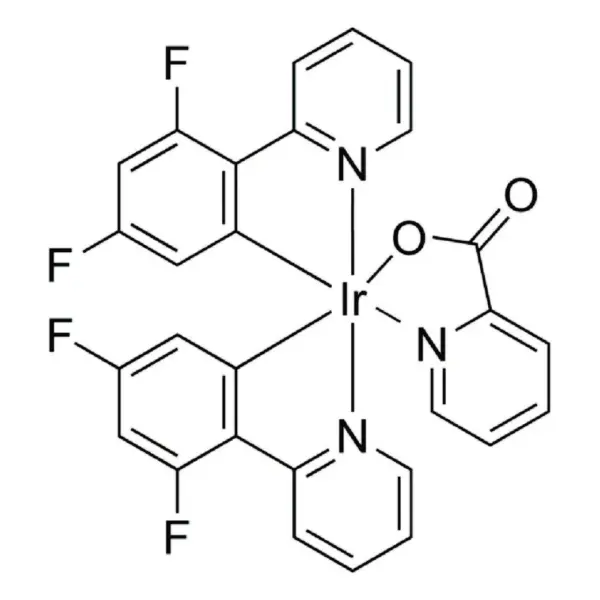
Bis[2-(4,6-difluorophenyl)pyridinato-C2,N](picolinato)iridium(III) – Sigma-Aldrich
RM1,192.00Brand:
Sigma-Aldrich
Synonyms
F2Irpic, FIrpic
Cas No.
376367-93-0
Application
FIrpic is a light blue heteroleptic triplet emitter. This material is typically doped into host matrices such as tetra-aryl silanes and short conjugation length carbazole derivatives in OLEDs, showing a good quantum efficiency.
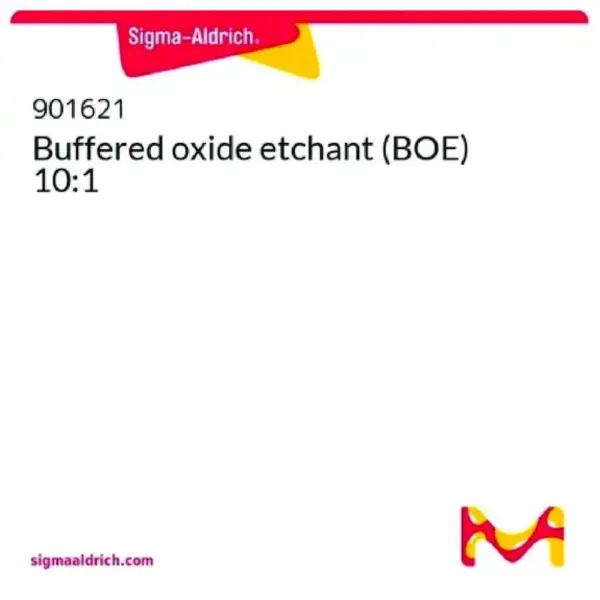
Buffered oxide etchant (BOE) 10:1 – Sigma-Aldrich
RM660.00Brand:
Sigma-Aldrich
Synonyms
BHF, Buffered HF
Cas No.
–
General Descriptions
Buffered oxide etchant (BOE) is a wet etchant used in microfabrication. Its primary use is in etching thin films of silicon dioxide (SiO2) or silicon nitride (Si3N4). It is a mixture of a buffering agent, such as ammonium fluoride (NH4F), and hydrofluoric acid (HF). Concentrated HF etches silicon dioxide too quickly for good process control and also peels the photoresist used in lithographic patterning.
Application
Buffered oxide etchant (BOE) 10:1 can be used in the etching of titanium carbide, which can be used in microelectromechanical systems (MEMS). It can also be used in the etching of spin-on-dopant (SOD) for the development of conductor-insulator-conductor tunnelling diodes. It can also be used to enhance the surface of fused quartz devices.
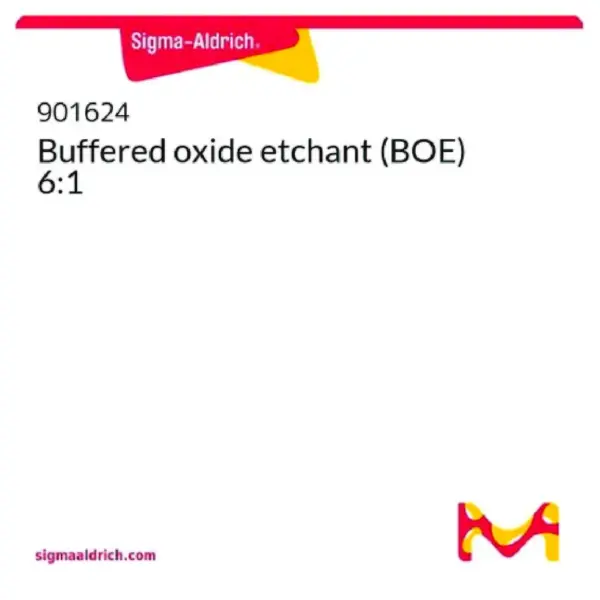
Buffered oxide etchant (BOE) 6:1 – Sigma-Aldrich
RM660.00Brand:
Sigma-Aldrich
Synonyms
BHF, Buffered HF
Cas No.
–
General Descriptions
BOE 6:1 is 6 parts by volume of 40% ammonium fluoride and 1 part by volume of 49% HF.
Buffered oxide etchant (BOE) is a wet etchant used in microfabrication. Its primary use is in etching thin films of silicon dioxide (SiO2) or silicon nitride (Si3N4). It is a mixture of a buffering agent, such as ammonium fluoride (NH4F), and hydrofluoric acid (HF). Concentrated HF etches silicon dioxide too quickly for good process control and also peels the photoresist used in lithographic patterning.
Application
Buffered oxide etchant (BOE) 6:1 can be used in the oxide removal of AlGaN/GaN-based high electron mobility transistors for gate photolithography. It can be used in a buffer oxide etchant method for the fabrication of a micro biochip.
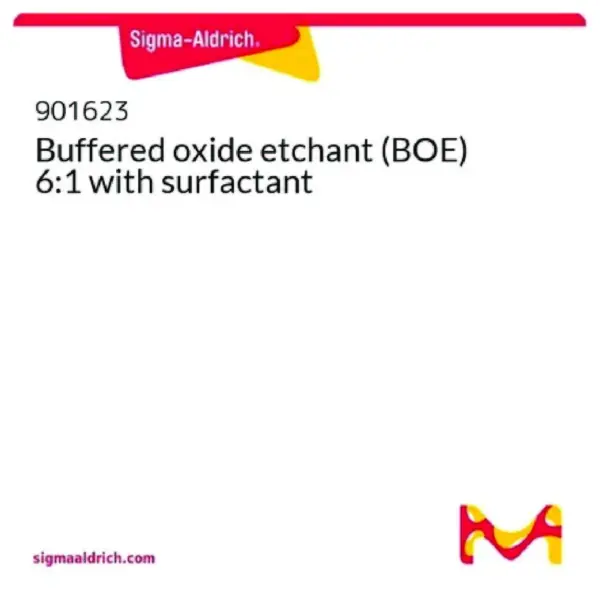
Buffered oxide etchant (BOE) 6:1 with surfactant – Sigma-Aldrich
RM621.00Brand:
Sigma-Aldrich
Synonyms
BHF, Buffered HF
Cas No.
–
General Descriptions
Buffered oxide etchant (BOE) is a wet etchant used in microfabrication. Its primary use is in etching thin films of silicon dioxide (SiO2) or silicon nitride (Si3N4). It is a mixture of a buffering agent, such as ammonium fluoride (NH4F), and hydrofluoric acid (HF). Concentrated HF etches silicon dioxide too quickly for good process control and also peels photoresist used in lithographic patterning.
Application
Buffered oxide etchant (BOE) 6:1 with surfactant may be used in the oxide removal of AlGaN/GaN-based high electron mobility transistors for gate photolithography.[1][2] It may also be used in a buffer oxide etchant method for the fabrication of a micro biochip.
Carbon nanotube, multi-walled, >98% carbon basis – Sigma-Aldrich
RM1,038.00Brand:
Sigma-Aldrich
Synonyms
MWCNT, MWNT, Multiwall carbon nanotube
Cas No.
308068-56-6
General description
Multi walled carbon nanotubes (MWNTs, CNTs) were prepared by chemical vapor deposition (CVD). In chemical vapor deposition (CVD), a volatile precursor undergoes thermal decomposition at elevated temperatures to form a solid deposit on a substrate. The diameter of the tube ranges between 6-13nm and the average length is 10μm. The multiwalled nanotubes are stable in inert atmosphere upto a temperature of 3697oC. CVD production method is followed by HCl demineralization.
Application
A hybrid nanostructure system of MWNTs/titania was fabricated to be used as photodiodes in dye sensitized solar cells.[2] MWNTs were investigated as electrodes for electrochemical biosensors. Use of MWNTs increased the efficacy, sensitivity and mechanical strength of the sensors.
Carbon nanotube, multi-walled (MWNT) belongs to the class of carbonaceous materials with excellent physiochemical, thermo-mechanical and electrochemical properties. This material can be used in a variety of sustainable energy applications such as solar cells, photocatalysis, biosensor, gas sensor, supercapacitor and as a filler that acts as a reinforcement to improve the mechanical property of composites.
Physical form
average wall thickness 7-13 graphene layers
Preparation Note
Chemical Vapor Deposition (CVD) Method
Carbon nanotube, multi-walled, carboxylic acid functionalized,>90% carbon basis – Sigma-Aldrich
RM1,038.00Brand:
Sigma-Aldrich
Synonyms
Carbon nanotube, multi-walled, carboxylic acid functionalized
Cas No.
308068-56-6
General description
Multi walled carbon nanotubes (MWNTs, CNTs) were prepared by chemical vapor deposition (CVD). In chemical vapor deposition (CVD), a volatile precursor undergoes thermal decomposition at elevated temperatures to form a solid deposit on a substrate. 1 Carboxylic acid groups can be attached to the defect sides and ends of the nanotube by treatment with oxidizing agents. Carboxylic acid groups can be easily derivatized into different functional groups.
Application
These carbon nanotubes are produced via the Catalytic Carbon Vapor
Deposition (CCVD) process. Applications include Electronics; 1 Sensors; 2 Composites; Energy Storage and Study of Life Science systems.3
Preparation Note
Catalytic Carbon Vapor Deposition (CCVD) Method
Legal Information
Product of Nanocyl, Inc
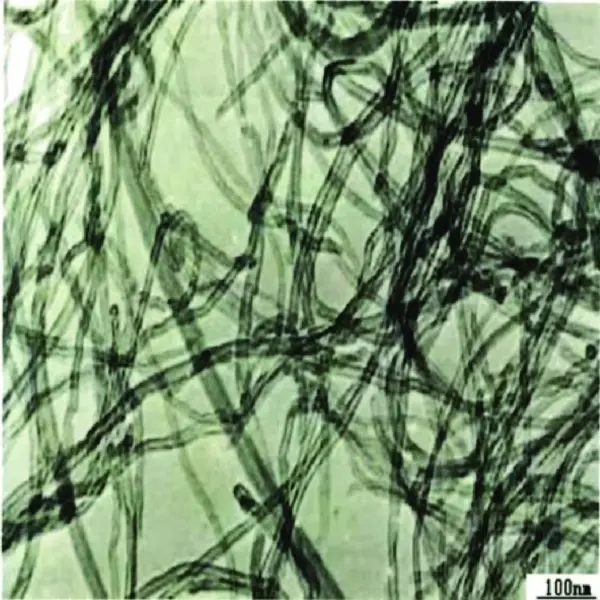
Carbon nanotube, multi-walled, functionalized powder – Sigma-Aldrich
RM502.00Brand:
Sigma-Aldrich
Synonyms
MWCNTs
Cas No.
308068-56-6
Application
Our high-purity functionalized multiwalled carbon nanotubes can be used for nanocomposites to increase electrical conductivity or mechanical properties given its high conductivity and aspect ratio. Its functionalization allows stable formulations during your nanocomposite preparation. For instance, this product has shown stability within a gelatin based bioink: not observed any change in impedance over 6 months of real time and 3 years of accelerated time.
Carbon nanotube, single-walled, ≥90% carbon basis (≥80% as carbon nanotubes), 1-2 nm diameter – Sigma-Aldrich
RM2,733.00Brand:
Sigma-Aldrich
Synonyms
CNT, SWCNT, SWNT, Single wall carbon nanotube
Cas No.
308068-56-6
General description
Produced using CHASM′s patented CoMoCAT™ synthesis technology, Signis® CG200 is the company′s largest-diameter single-wall carbon nanotube product.
Tube diameter determined by fluorescence spectroscopy.
Application
Manufacturing, Characterization and Use of SWCNTs
Carbon nanotube, single-walled (SWNT) belongs to the class of carbonaceous materials with excellent physiochemical, thermo-mechanical and electrochemical properties. This material can be used in a variety of sustainable energy applications such as solar cells, photocatalysis, thin film conductors, field effect transistors (FETs), biosensor, gas sensor, supercapacitor and nanomechanical resonators.
Suitable for use in conductive composites and coatings. Functionalized single-walled carbon nanotubes (SWNTs) embedded in an insulating polymer matrix may be used as stable hole collection layer in perovskite solar cells.
Preparation Note
CoMoCAT™ Catalytic Chemical Vapor Deposition (CVD) Method
Legal Information
CoMoCAT is a trademark of Chasm Advanced Materials
Signis is a registered trademark of Chasm Advanced Materials
Carbon nanotube, single-walled, conductive aqueous ink, 0.9-1.1 mg/mL SWCNT – Sigma-Aldrich
RM1,822.00Brand:
Sigma-Aldrich
Synonyms
CG300-Aqueous Ink, SWCNT Ink, SWNT Ink, SWeNT AC200, Single-Walled Carbon Nanotube Ink
Cas No.
308068-56-6
General description
We are committed to bringing you Greener Alternative Products, which adhere to one or more of The 12 Principles of Greener Chemistry. This product belongs to Enabling category of greener alternatives thus aligns with “Design for energy efficency”. Click here for more information.
Application
This conductive ink is aqueous based and contains highly conductive single wall carbon nanotubes and is formulated for spray coating.This ink is primarily intended for making highly transparent conductive films on a variety of substrates.
Legal Information
Product of Chasm Advanced Materials, Inc.
Signis is a registered trademark of Chasm Advanced Materials, Inc.
CoMoCAT is a trademark of Chasm Advanced Materials, Inc.
CHASM is a trademark of Chasm Advanced Materials, Inc.
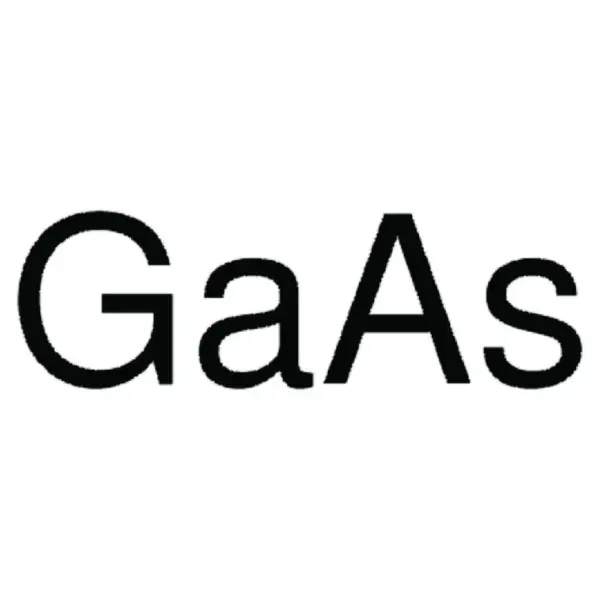
Gallium arsenide (single crystal substrate), <100> – Sigma-Aldrich
RM913.00Brand:
Sigma-Aldrich
Synonyms
Nanofibrous inorganic powder, SiO2
Cas No.
7631-86-9
General Description
Silica nanofibers are yielded through a novel ac electrospinning process resulting in extraordinary aspect ratios, consistent purity, and consistent certification of form parameters that are difficult if not impossible to achieve using other nanofiber production methods. Potential applications include filtration membranes and catalyst support.
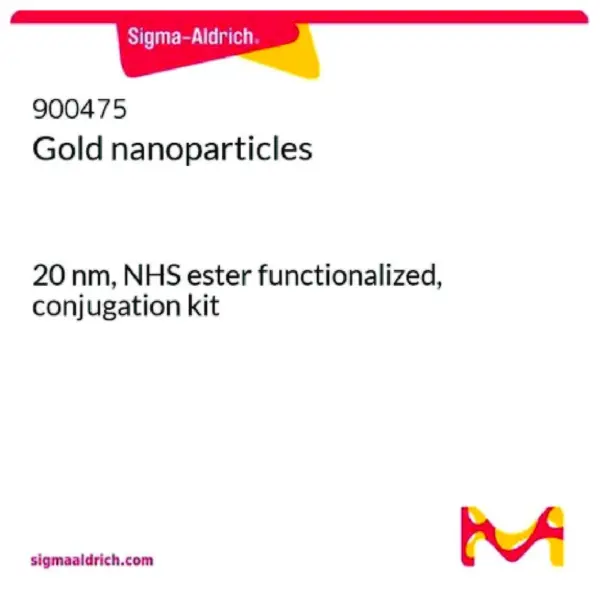
Gold nanoparticles, 20 nm, NHS ester functionalized, conjugation kit – Sigma-Aldrich
RM1,579.00Brand:
Sigma-Aldrich
Synonyms
NHS-activated gold nanoparticles
Cas No.
–
General description
Gold nanoparticles, 20 nm, NHS ester functionalized, conjugation kit is a comprehensive kit that enables easy, one-step conjugation of your amine-containing ligands to 20 nm gold nanoparticles. The kit includes pre-made mixtures of lyophilized (freeze-dried) NHS-activated gold nanoparticles, along with all the necessary materials for three independent conjugation reactions. The kit components comprise:
- 3 vials of 20 nm NHS-Activated Gold Nanoparticles (lyophilized)
- Protein Resuspension Buffer – 1.5ml
- Reaction Buffer – 1.5ml
- Quencher Solution – 1.5ml
- Reaction protocol
The gold nanoparticles in this kit are supplied as a lyophilized (freeze-dried) mixture. The conjugation reaction is initiated by simply reconstituting the freeze-dried nanoparticles with the protein of interest, which attaches to the nanoparticle surface via lysine residues. The gold conjugation procedure has a quick hands-on time of around 10 minutes, and the conjugate is fully ready for use within 3 hr. Researchers only need to pipette the biomolecule into a vial containing the nanoparticles, quench the reaction, and perform product washing through microcentrifugation.
The provided protocol is optimized for highly efficient covalent conjugation, resulting in stable gold nanoparticle conjugates. Optional protocol steps involve additional materials, such as 10% aqueous BSA (126615) and Tris saline resuspension buffer (PPB002), which are sold separately.
Application
This gold conjugation kit streamlines the process of conjugating your proteins or biomolecules to 20 nm gold nanoparticles. Gold conjugation helps researchers to visualize and assay a specific protein or antibody of interest. Gold conjugates are useful in a wide range of applications like lateral flow testing, immunoblotting, immuno-electron microscopy, immunohistochemical staining, and other bio-assays.
Different sizes of gold nanoparticles perform better in specific applications. For lateral flow and flow cytometry, we recommend using gold nanoparticles with diameters between 20 nm and 100 nm. For immunoblotting or immuno-electron microscopy, the optimal range is 5 nm to 40 nm. For bioassays utilizing dynamic light scattering, gold nanoparticles with diameters ranging from 60 nm to 100 nm are suggested.
Features and Benefits
- The resulting covalent conjugates offer greater stability compared to those prepared using passive adsorption methods.
- Fast and convenient conjugation reaction with no need for pre-activation.
- A spacer between the gold nanoparticle surface and the conjugated ligand minimizes the impact on the tertiary protein structure. This reduces the likelihood of poor performing conjugates, a common issue encountered with conjugates prepared by passive adsorption.
- Gold surface coating is precisely engineered to minimize non-specific protein binding in biological assays.
Legal Information
Product of CytoDiagnostics, Inc.

Gold nanoparticles, 5 nm, NHS ester functionalized, conjugation kit – Sigma-Aldrich
RM1,658.00Brand:
Sigma-Aldrich
Synonyms
NHS-activated gold nanoparticles
Cas No.
–
General description
Gold nanoparticles, 5 nm, NHS ester functionalized, conjugation kit is a comprehensive kit that enables easy, one-step conjugation of your amine-containing ligands to 5 nm gold nanoparticles. The kit includes pre-made mixtures of lyophilized (freeze-dried) NHS-activated gold nanoparticles, along with all the necessary materials for three independent conjugation reactions. The kit components comprise:
- 3 vials of 5 nm NHS-Activated Gold Nanoparticles (lyophilized)
- Protein Resuspension Buffer – 1.5ml
- Reaction Buffer – 1.5ml
- Quencher Solution – 1.5ml
- Reaction protocol
The gold nanoparticles in this kit are supplied as a lyophilized (freeze-dried) mixture. The conjugation reaction is initiated by simply reconstituting the freeze-dried nanoparticles with the protein of interest, which attaches to the nanoparticle surface via lysine residues.
The gold conjugation procedure has a quick hands-on time of around 10 minutes, and the conjugate is fully ready for use within 3 hr. Researchers only need to pipette the biomolecule into a vial containing the nanoparticles, quench the reaction, and perform product washing through microcentrifugation.
The provided protocol is optimized for highly efficient covalent conjugation, resulting in stable gold nanoparticle conjugates. Optional protocol steps involve additional materials, such as 10% aqueous BSA (126615) and Tris saline resuspension buffer (PPB002), which are sold separately.
Application
This gold conjugation kit streamlines the process of conjugating your proteins or biomolecules to 5 nm gold nanoparticles. Gold conjugation helps researchers to visualize and assay a specific protein or antibody of interest. Gold conjugates are useful in a wide range of applications like lateral flow testing, immunoblotting, immuno-electron microscopy, immunohistochemical staining, and other bio-assays.
Different sizes of gold nanoparticles perform better in specific applications. For lateral flow and flow cytometry, we recommend using gold nanoparticles with diameters between 20 nm and 100 nm. For immunoblotting or immuno-electron microscopy, the optimal range is 5 nm to 40 nm. For bioassays utilizing dynamic light scattering, gold nanoparticles with diameters ranging from 60 nm to 100 nm are suggested.
Features and Benefits
- The resulting covalent conjugates offer greater stability compared to those prepared using passive adsorption methods.
- Fast and convenient conjugation reaction with no need for pre-activation.
- A spacer between the gold nanoparticle surface and the conjugated ligand minimizes the impact on the tertiary protein structure. This reduces the likelihood of poor performing conjugates, a common issue encountered with conjugates prepared by passive adsorption.
- Gold surface coating is precisely engineered to minimize non-specific protein binding in biological assays.
Legal Information
Product of CytoDiagnostics, Inc.

